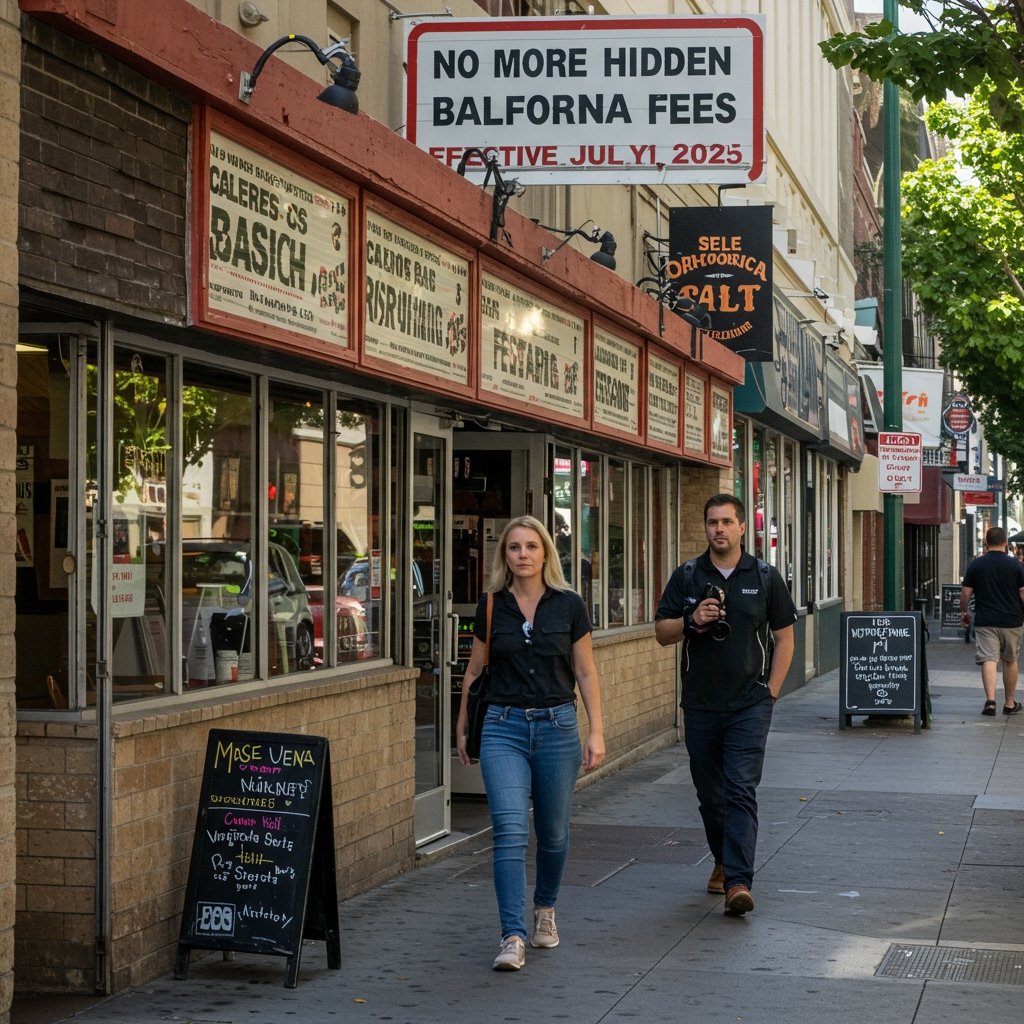California Enacts Sweeping Ban on Restaurant Surcharges
A significant shift is coming to California’s dining landscape. Governor Gavin Newsom has officially signed Assembly Bill 123 (AB 123) into law, enacting a statewide ban on mandatory service fees and surcharges at restaurants and other food establishments. This landmark legislation, set to take effect on July 1, 2025, aims to fundamentally change how consumers view and pay for their meals by requiring businesses to present the total cost upfront in menu prices.
The move comes amidst growing consumer frustration and confusion over tacked-on fees that have become increasingly common in recent years. These surcharges, often added at the end of a meal, can represent various costs, from employee health benefits to kitchen staff wages or simply a general ‘service fee,’ leading to unexpected increases in the final bill.
Governor Newsom’s signing of AB 123 signals a clear legislative intent to boost price transparency across the state’s vast food service industry. Proponents of the bill argue that the current practice of adding surcharges undermines clear pricing, making it difficult for diners to understand the true cost of their meal when making a selection and complicating budget management.
Understanding the Scope and Requirements of AB 123
At its core, Assembly Bill 123 mandates that the price listed on a menu must be the final price the consumer pays, excluding only applicable sales tax and voluntary tips. This means that any mandatory fee previously added separately – whether termed a “service fee,” “kitchen appreciation fee,” “health and wellness surcharge,” or similar – must now be incorporated directly into the item’s listed price on the menu.
The ban applies broadly to restaurants, cafes, bars serving food, and other food establishments throughout California. It targets mandatory fees, distinguishing them from voluntary gratuities left at the discretion of the customer, which remain permissible and are not impacted by the law.
The legislation effectively eliminates the practice of ‘drip pricing’ in the restaurant context, where the initial advertised price is lower than the final cost due to mandatory add-ons. By requiring an ‘all-in’ price display, AB 123 seeks to provide consumers with immediate clarity and enable easier comparison between dining options.
The Rationale: Addressing Consumer Confusion and ‘Junk Fees’
The primary driver behind the passage of Assembly Bill 123 is the desire to combat what legislators and consumer advocates describe as misleading pricing practices. For years, consumers have reported feeling misled or surprised by additional charges appearing on their bills, impacting their dining experience and perception of value.
This state-level action aligns with broader national conversations and regulatory efforts aimed at cracking down on “junk fees” across various industries, including travel, ticketing, and financial services. The principle is consistent: consumers should know the total price upfront without hidden or unavoidable extra costs.
By forcing restaurants to fold all mandatory costs into menu prices, the law aims to foster a more honest and transparent marketplace. Diners in California will theoretically be able to look at a menu item’s price and have confidence that this figure, plus tax, represents the full mandatory cost.
Implications and Adjustments for California Businesses
The implementation of AB 123 by July 1, 2025, presents significant operational and strategic challenges for restaurants and other food establishments across California. Businesses that have relied on surcharges to cover specific costs, such as employee benefits or minimum wage increases in certain localities, will need to fundamentally re-evaluate their pricing models.
Incorporating these costs into base menu prices requires careful calculation and potential adjustments across their entire offerings. This transition involves not only mathematical recalibrations but also the logistical undertaking of updating menus – both physical and digital – across potentially multiple locations.
Industry representatives anticipate that this change will necessitate significant operational and pricing adjustments statewide. Restaurants will need to decide how to distribute the previously surcharged costs across their various menu items, which could lead to noticeable price increases on individual dishes, even if the total cost to the consumer remains relatively similar in some cases.
Industry Response: Preparing for a New Pricing Era
The California Restaurant Association (CRA), representing a substantial portion of the state’s dining establishments, has acknowledged the passage of the bill and the need for its members to comply. While supporting the general idea of transparency, the organization has also highlighted the complexities involved in the transition.
The CRA and its members are now faced with the task of navigating this new regulatory environment, which may impact how businesses structure employee compensation, manage rising operating costs, and communicate value to customers. The approximately one-year window until the law takes effect provides businesses with time to plan and adapt, but the scale of the required changes is considerable for an industry already operating on often-thin margins.
Questions remain within the industry about how the change will ultimately affect consumer behavior, tipping practices, and the competitive landscape as all establishments adjust their listed prices. The CRA is expected to play a key role in helping its members understand the requirements and develop strategies for compliance.
The Path Forward: Implementation and Potential Outcomes
As the effective date of July 1, 2025, approaches, businesses in California will be actively working to update their systems and menus to ensure compliance with Assembly Bill 123. The enforcement mechanisms for the new law will likely involve consumer complaints and regulatory oversight, ensuring that mandatory fees are indeed eliminated from the final bill and integrated into menu pricing.
The long-term impact of AB 123 remains to be fully seen. While consumers are expected to benefit from clearer pricing and the elimination of frustrating hidden fees, there is anticipation that menu prices will rise to reflect the absorbed costs. The market will ultimately determine how these cost adjustments affect dining affordability and frequency.
Ultimately, the implementation of this law represents a significant policy shift, prioritizing upfront price transparency for diners across California and mandating a fundamental change in how restaurants structure and display their pricing.


















